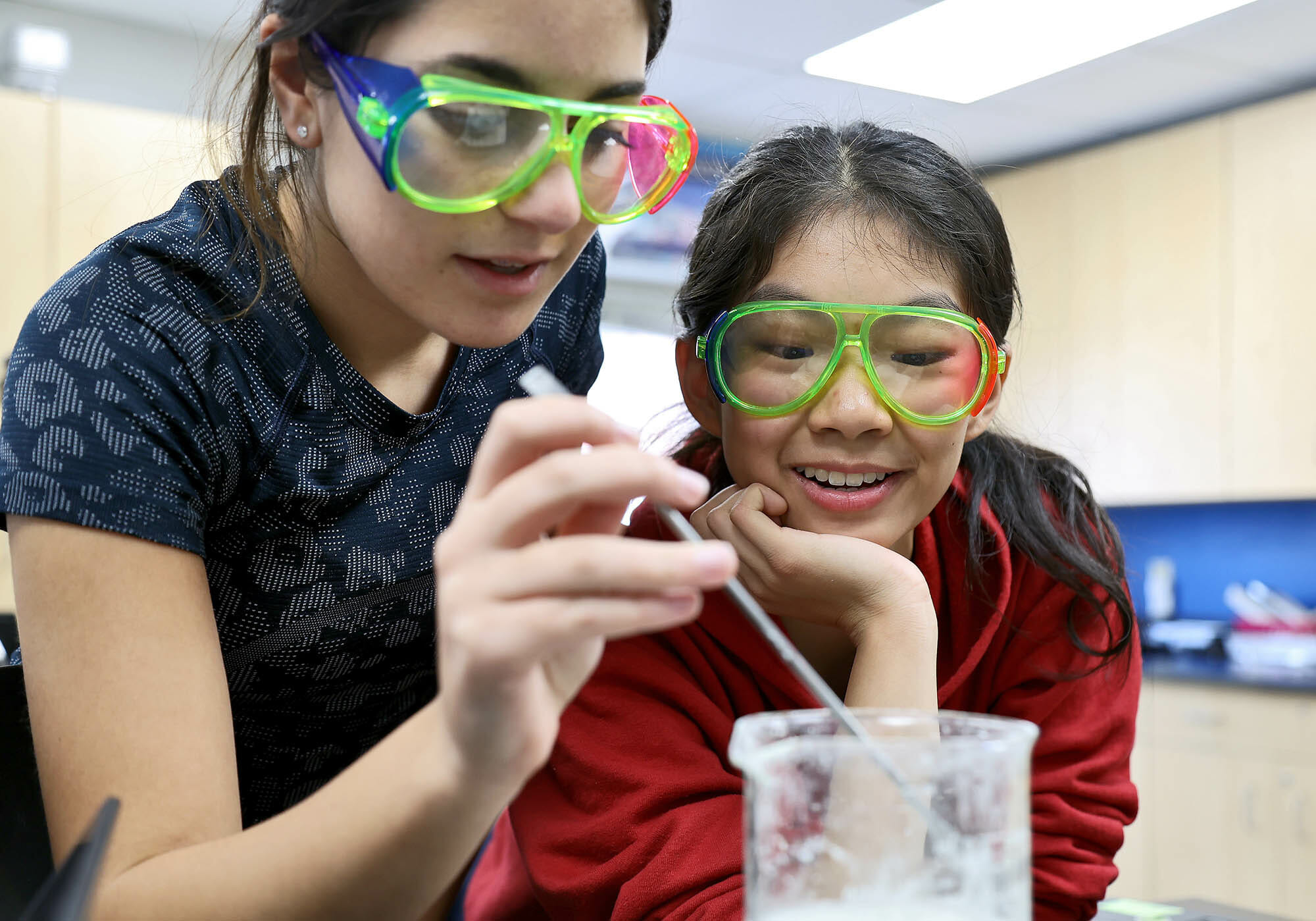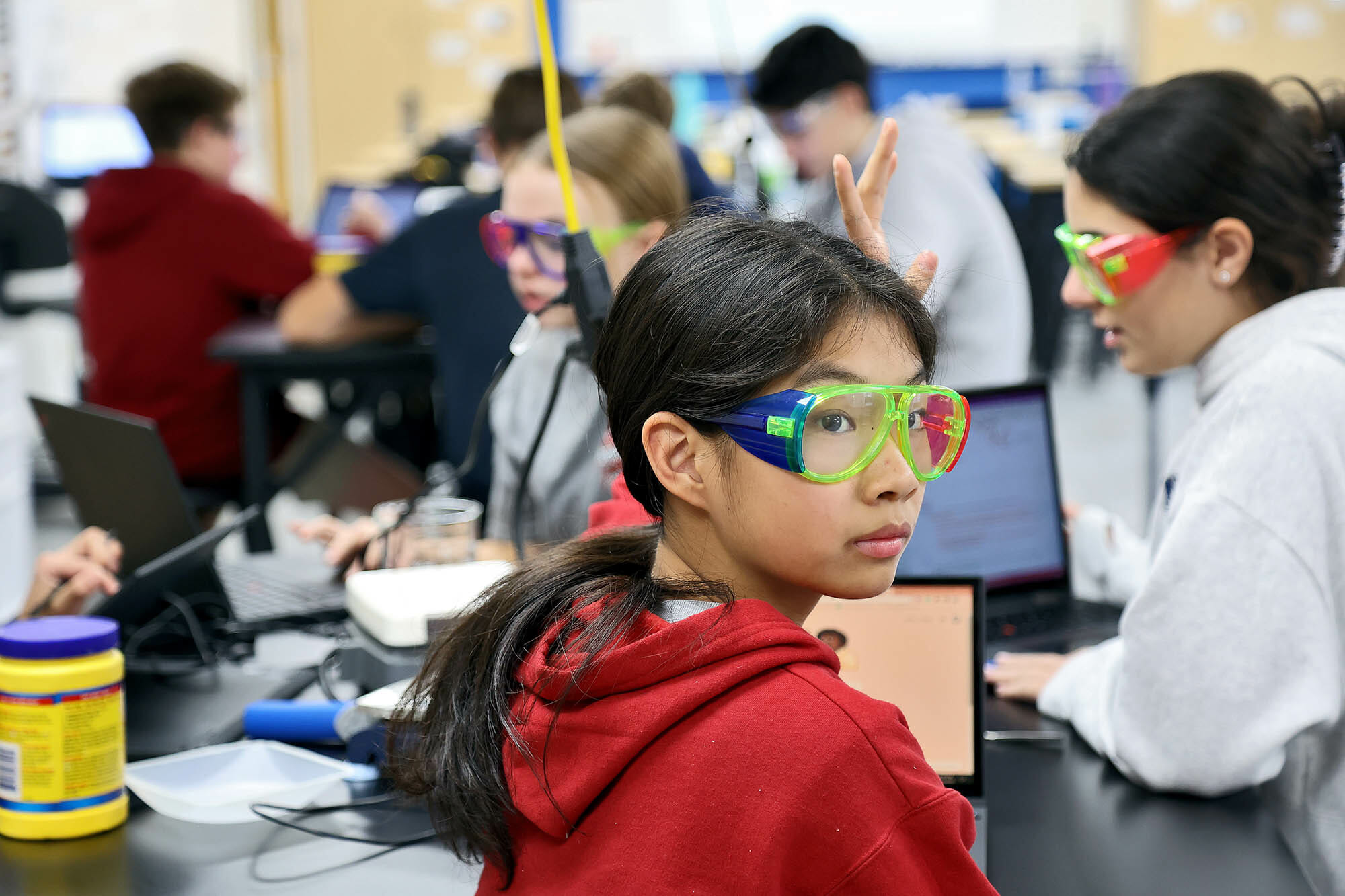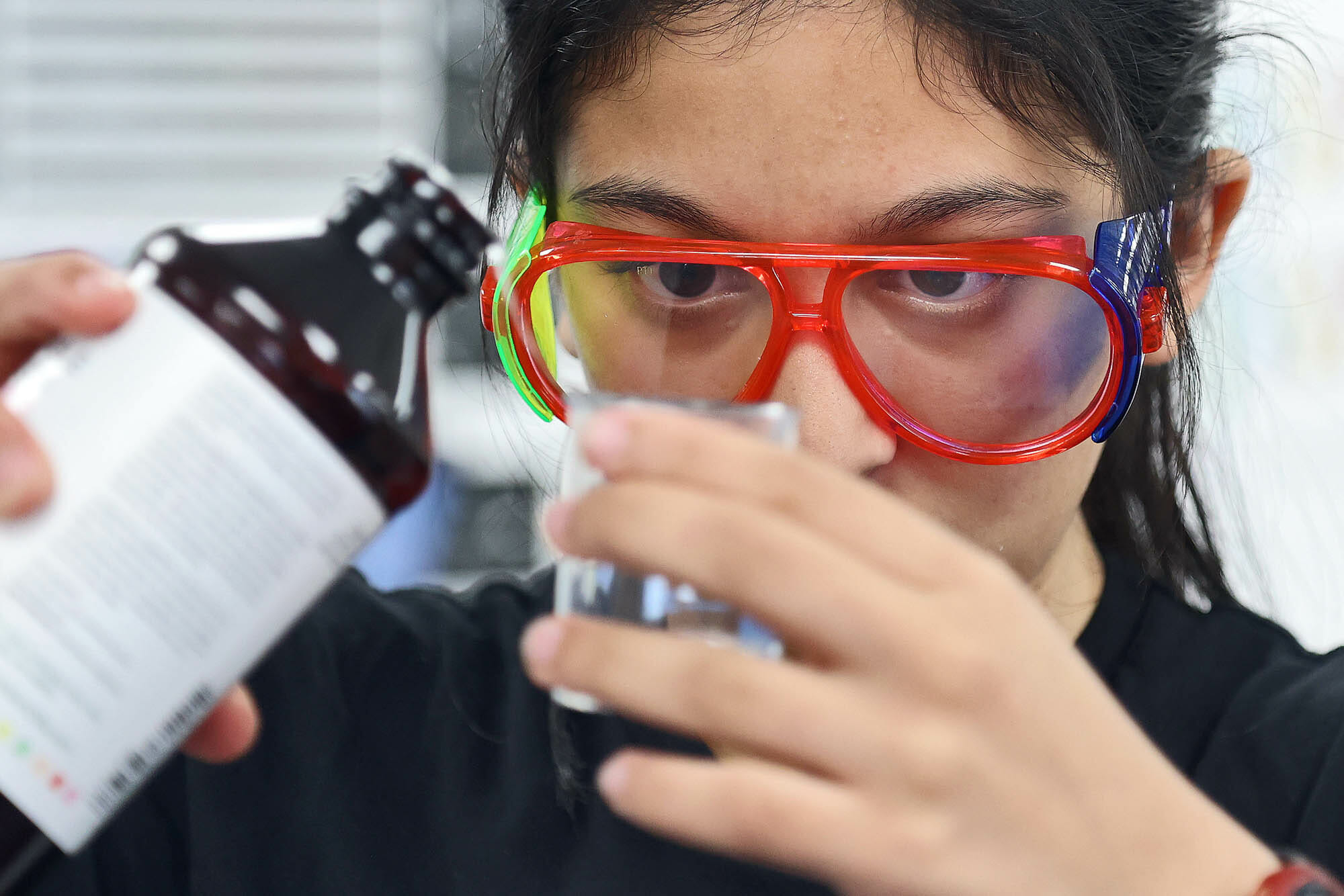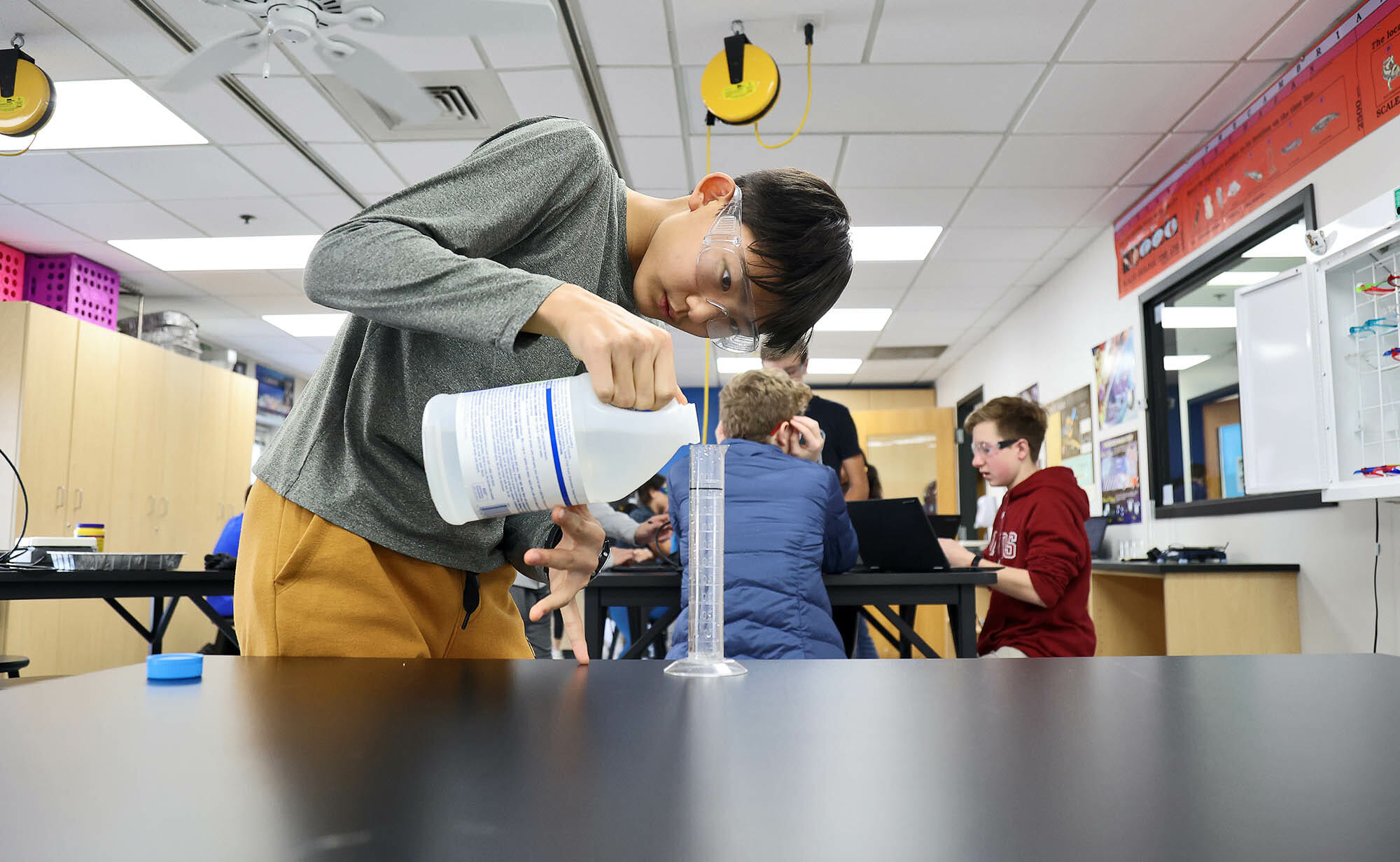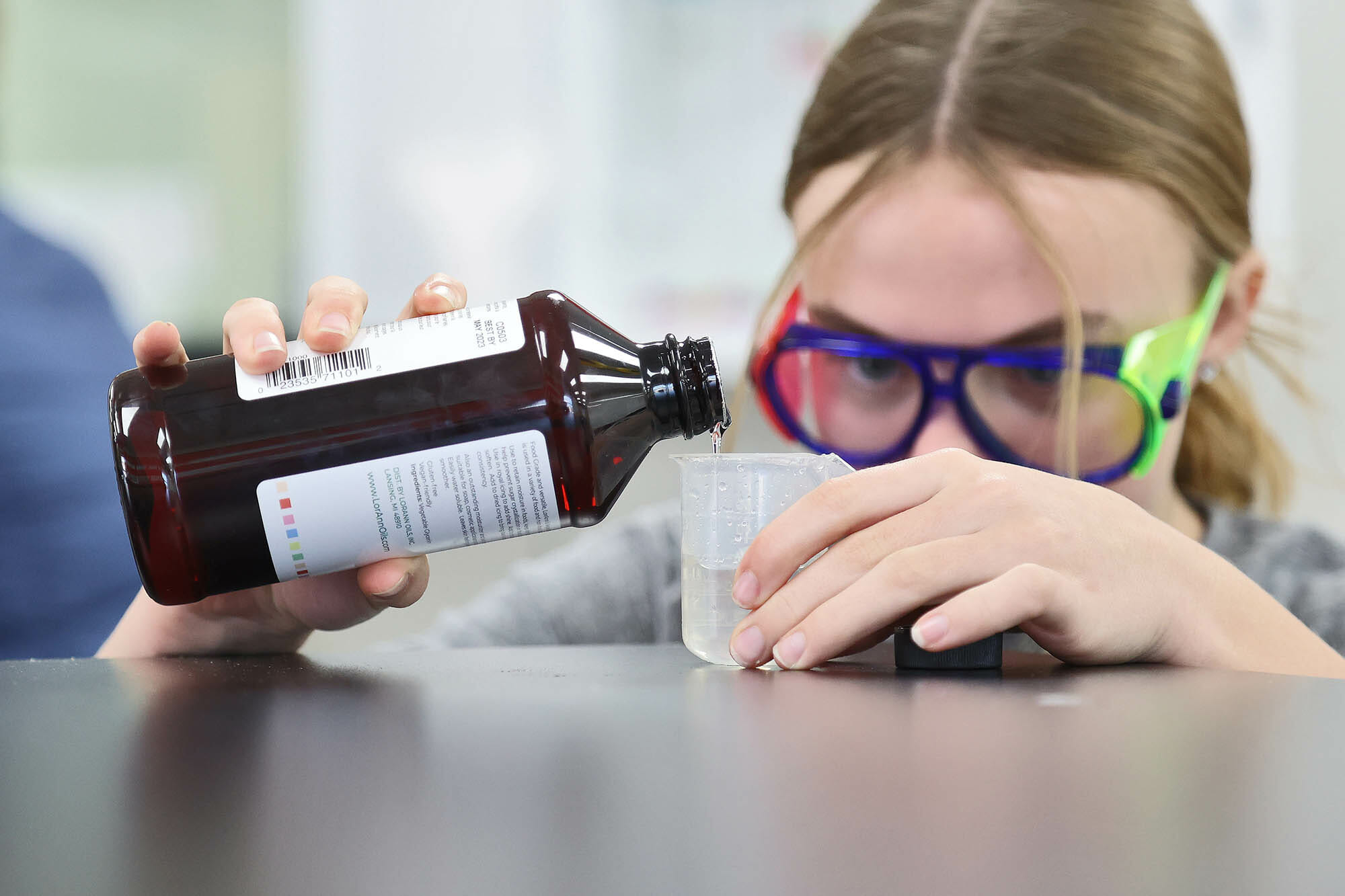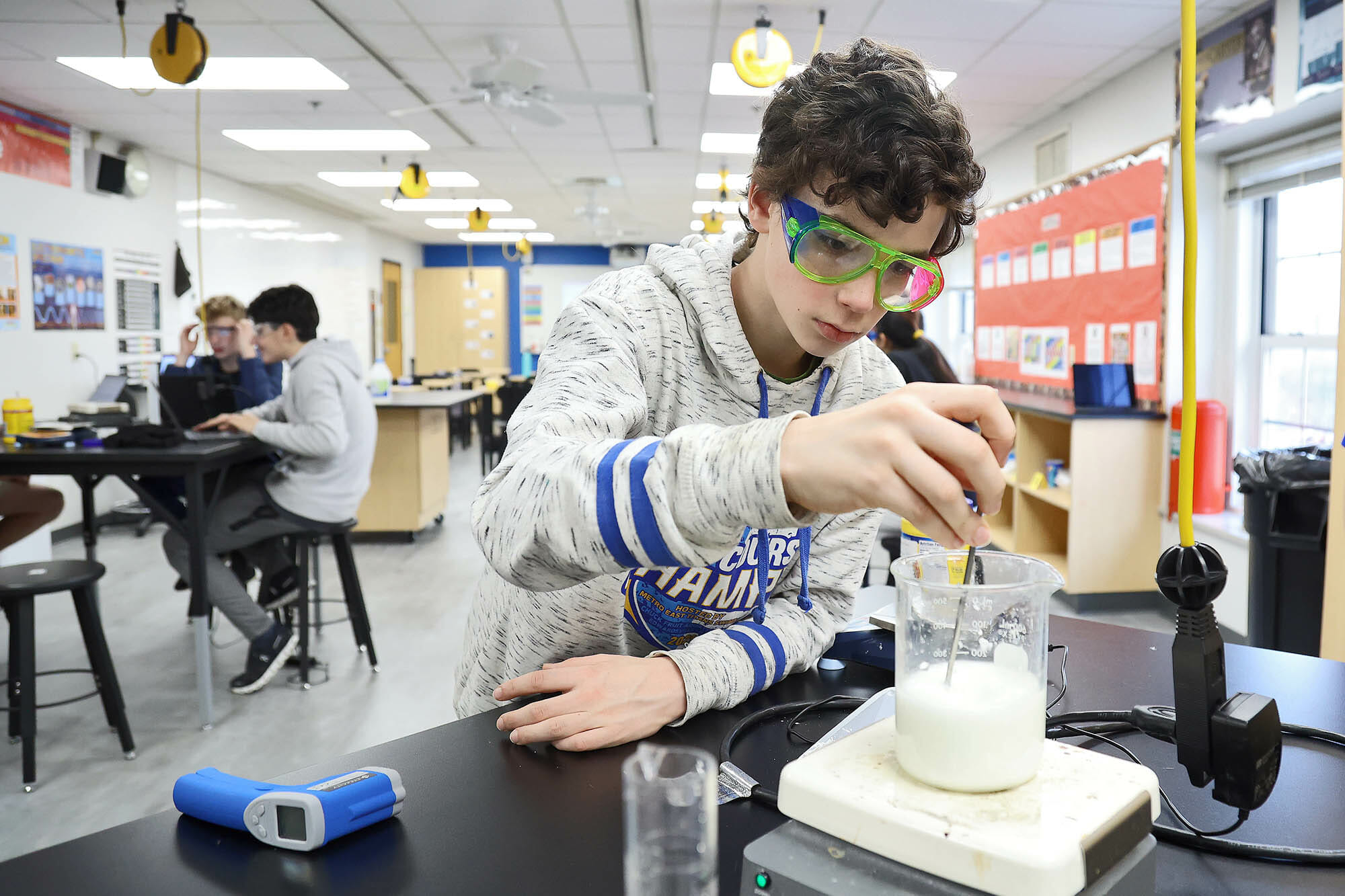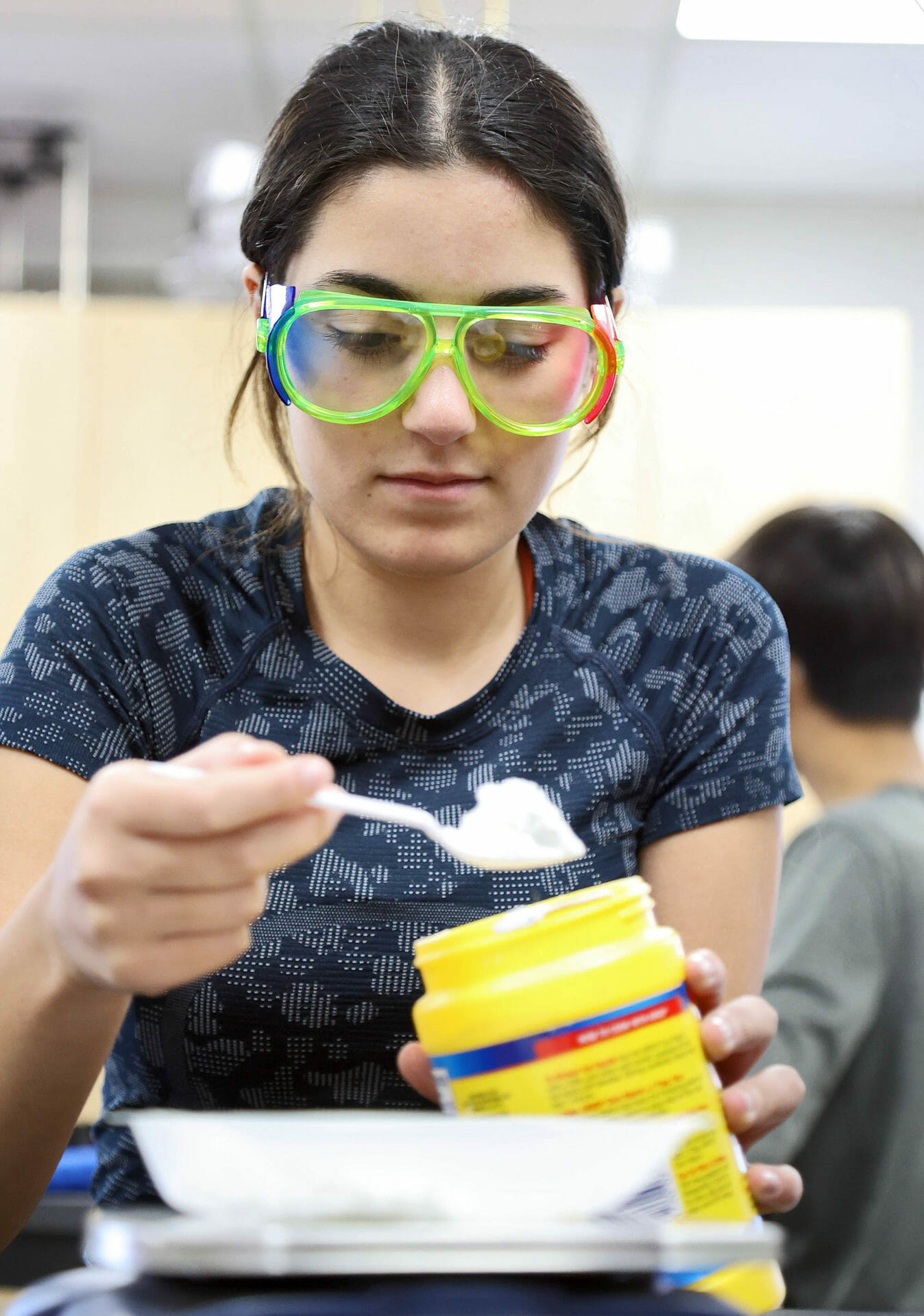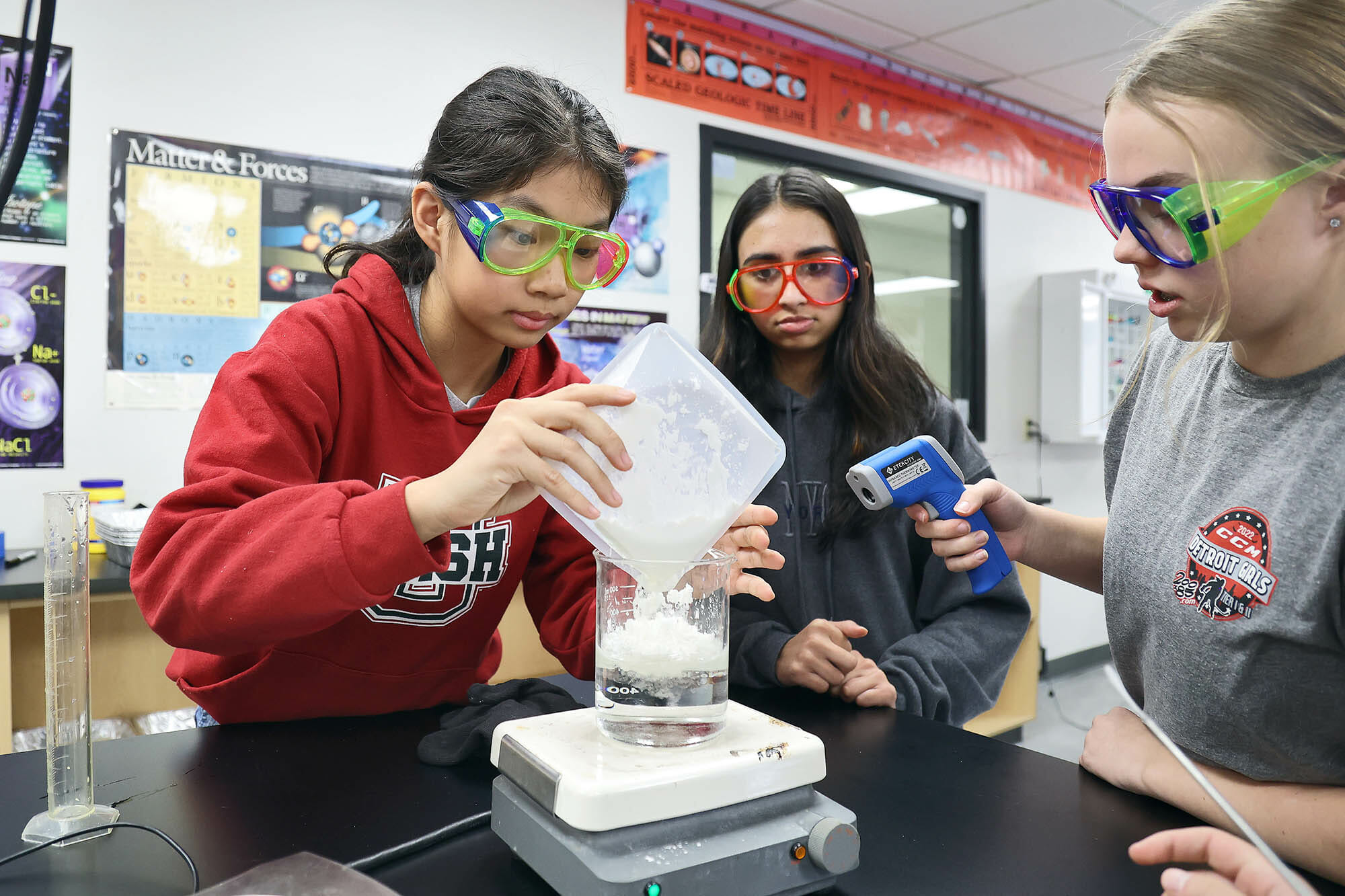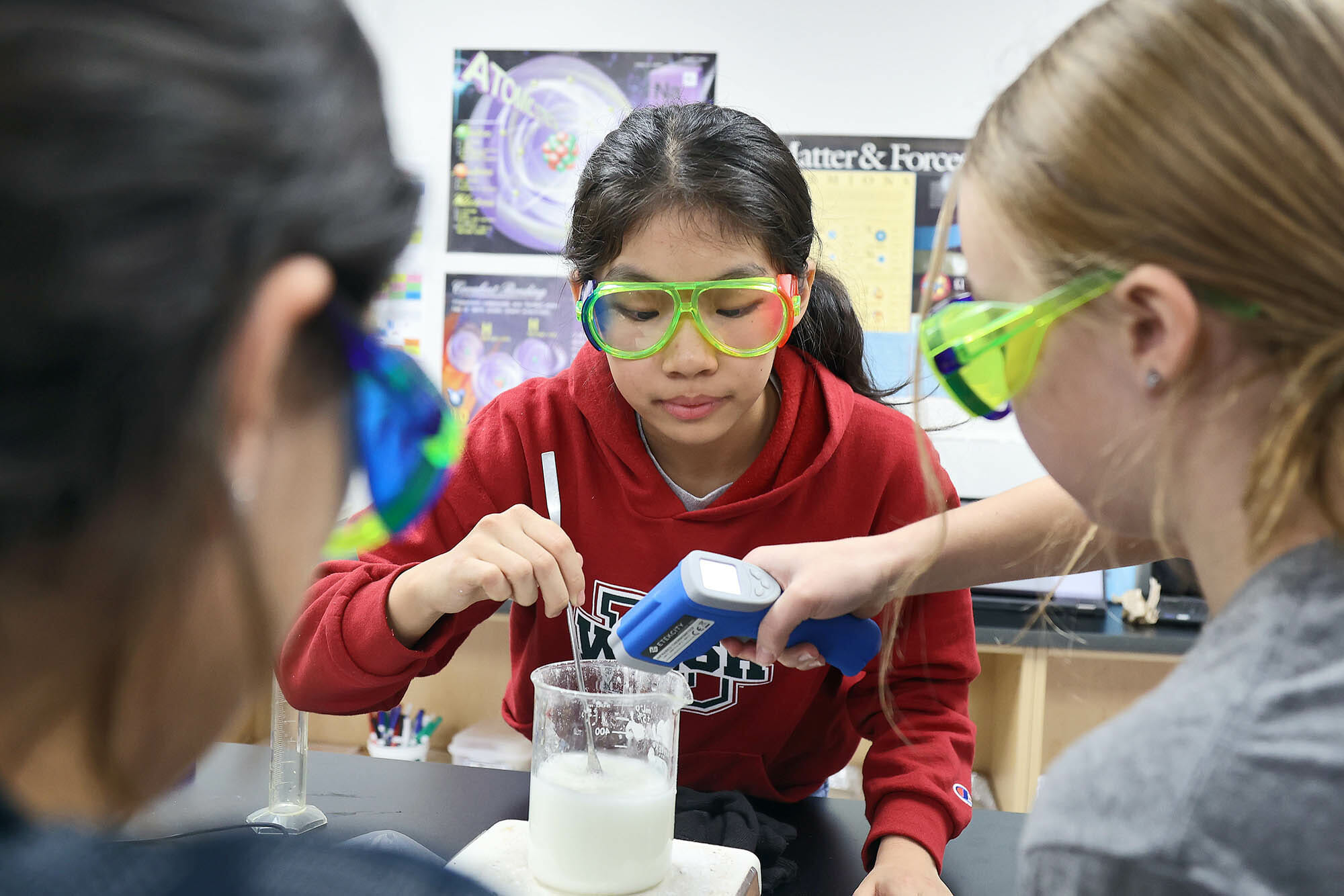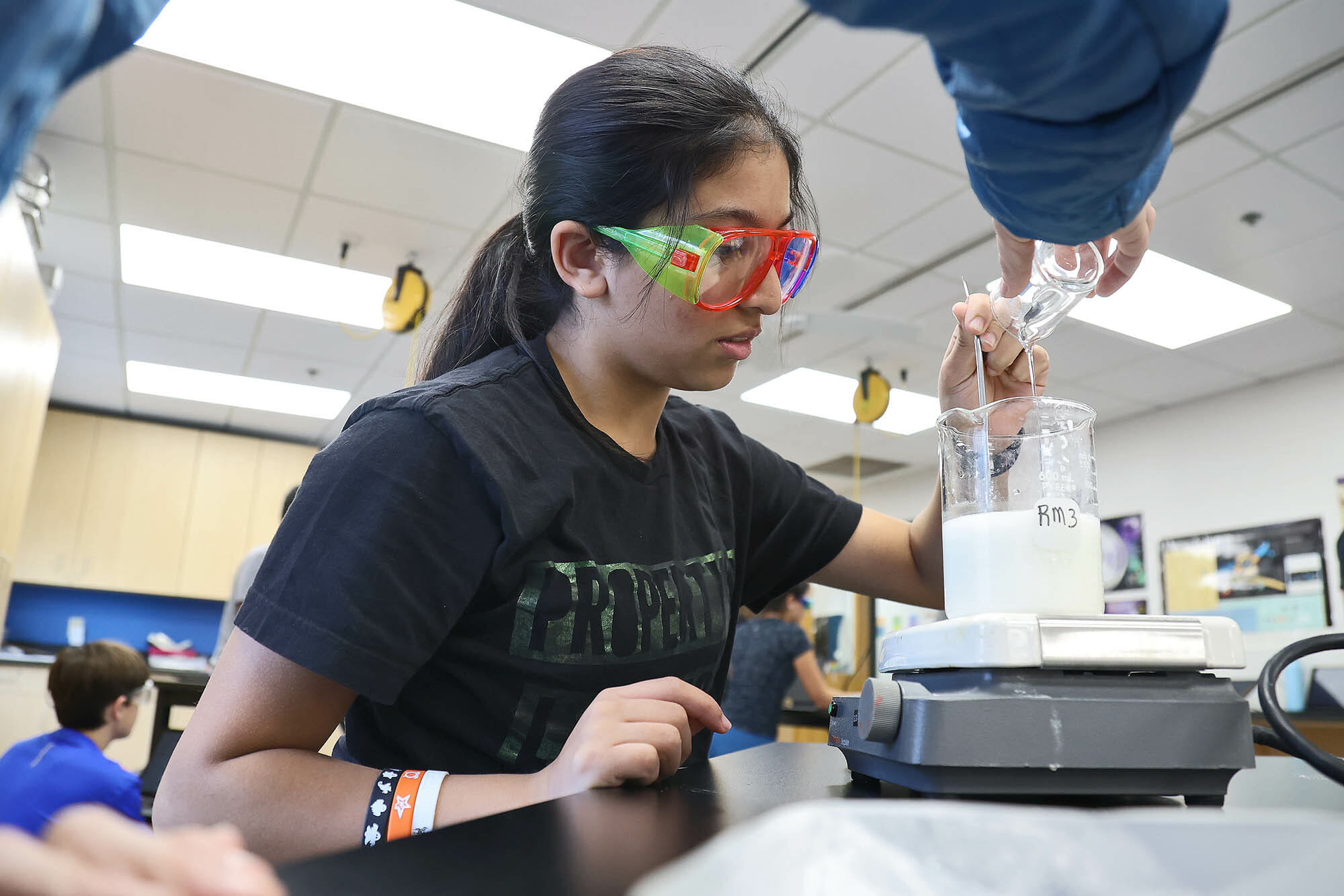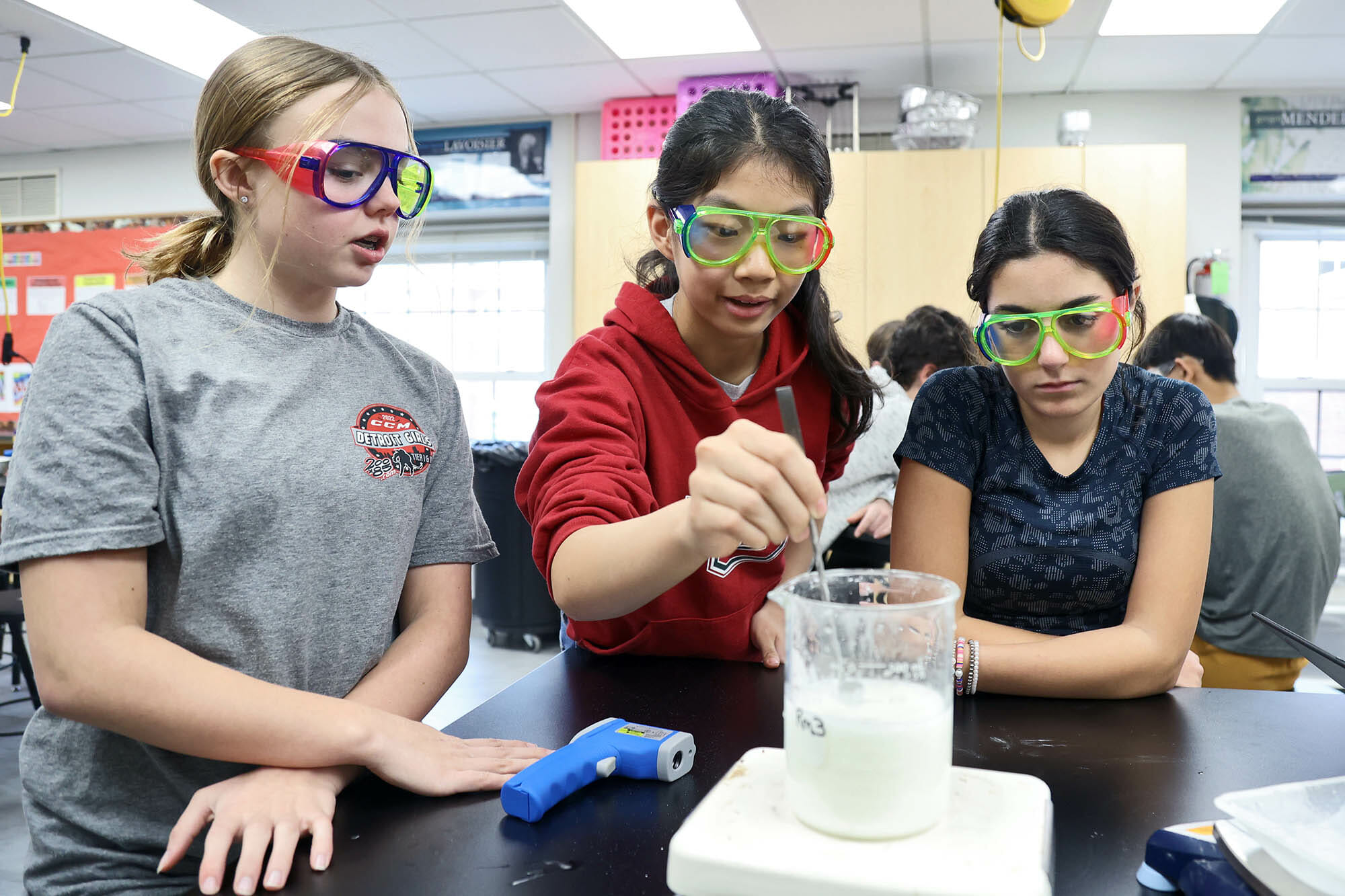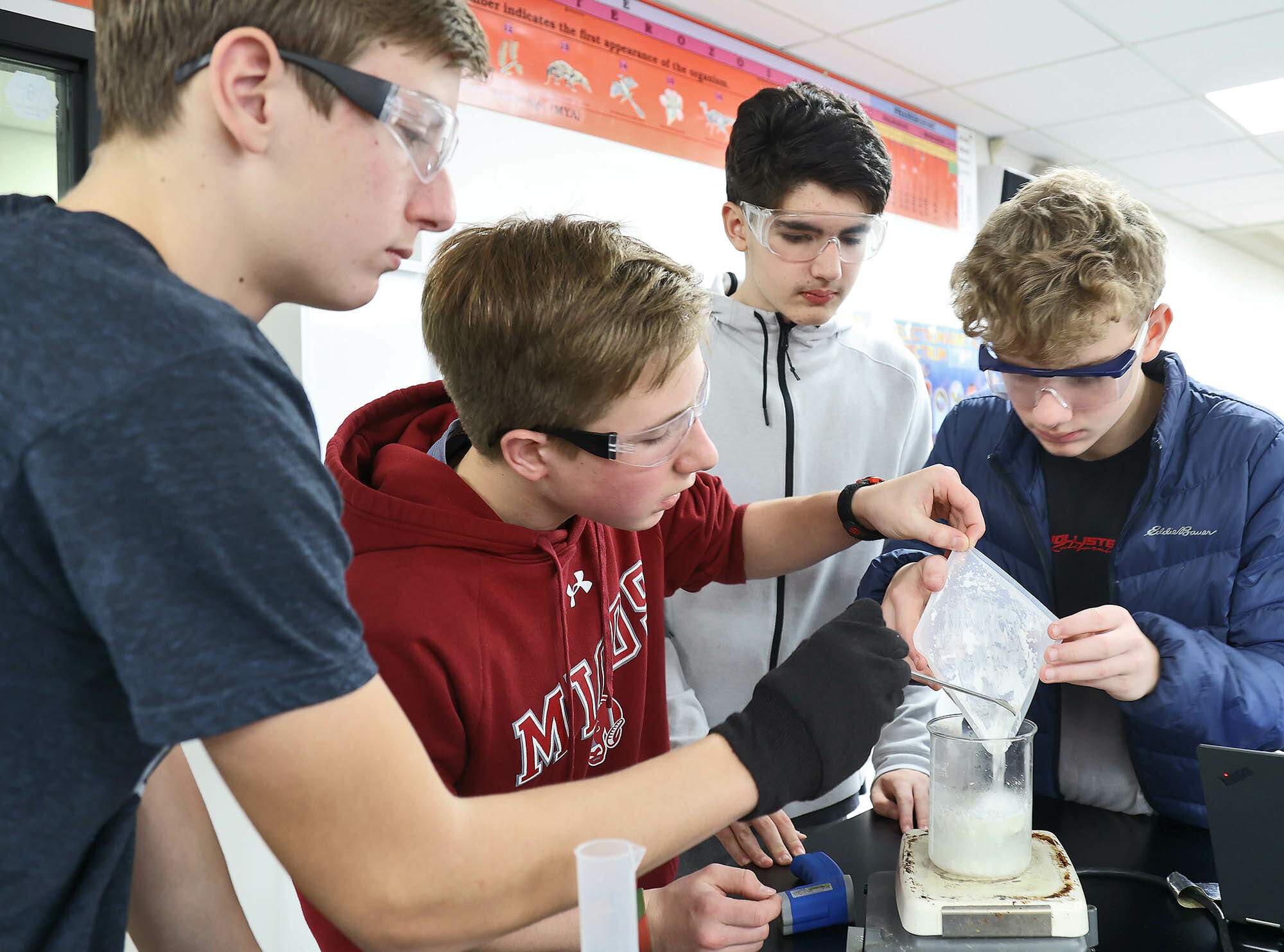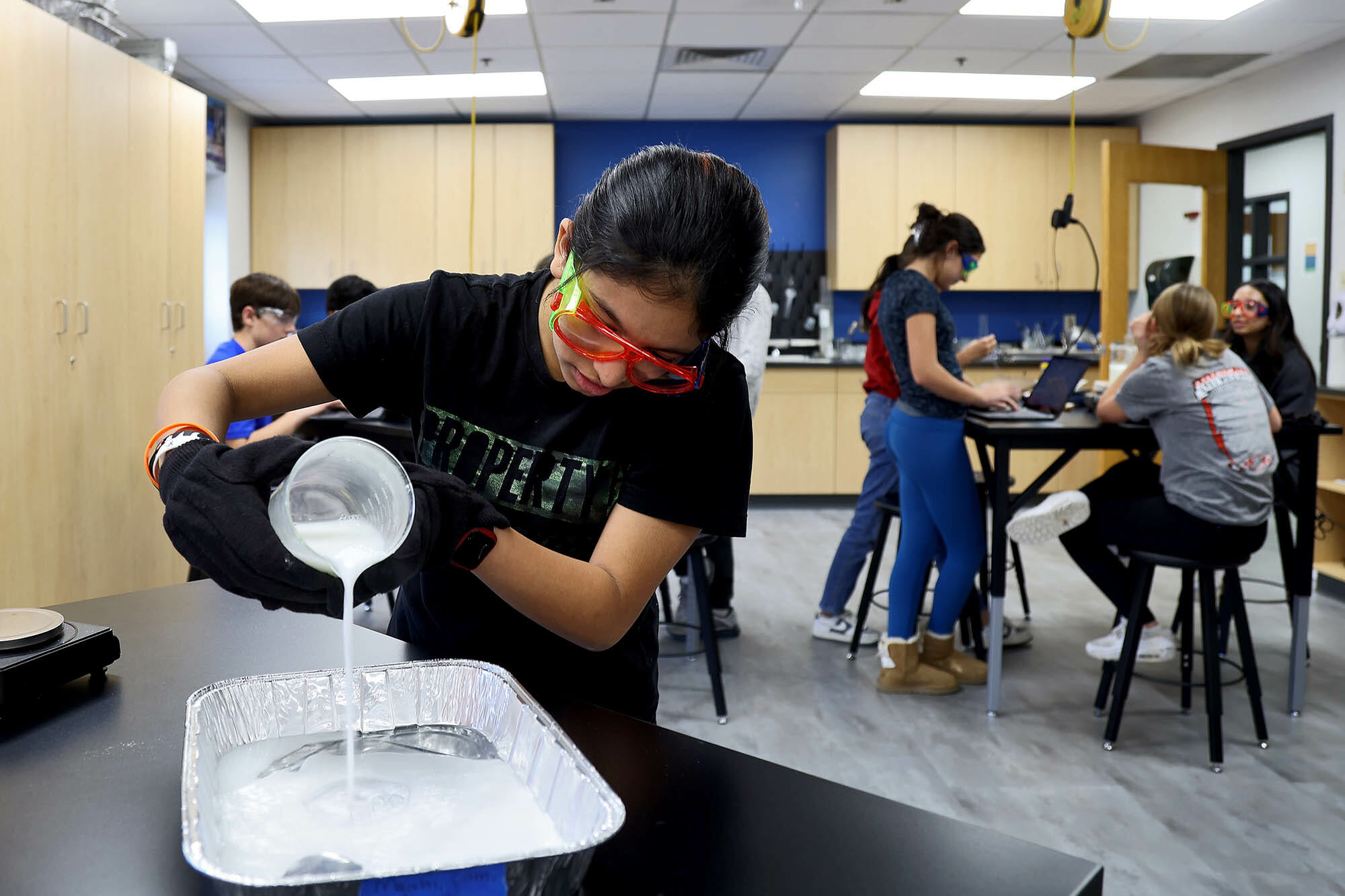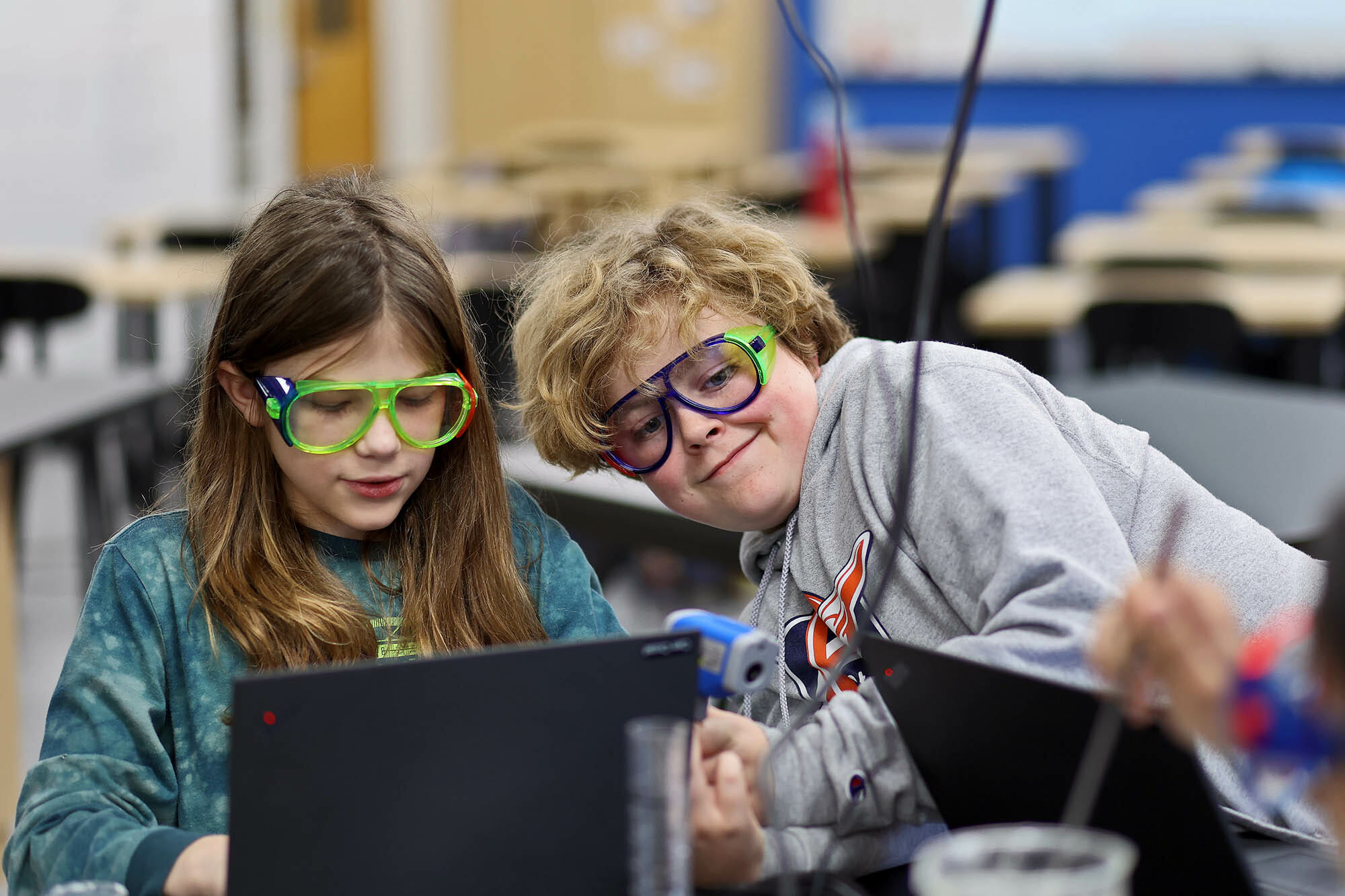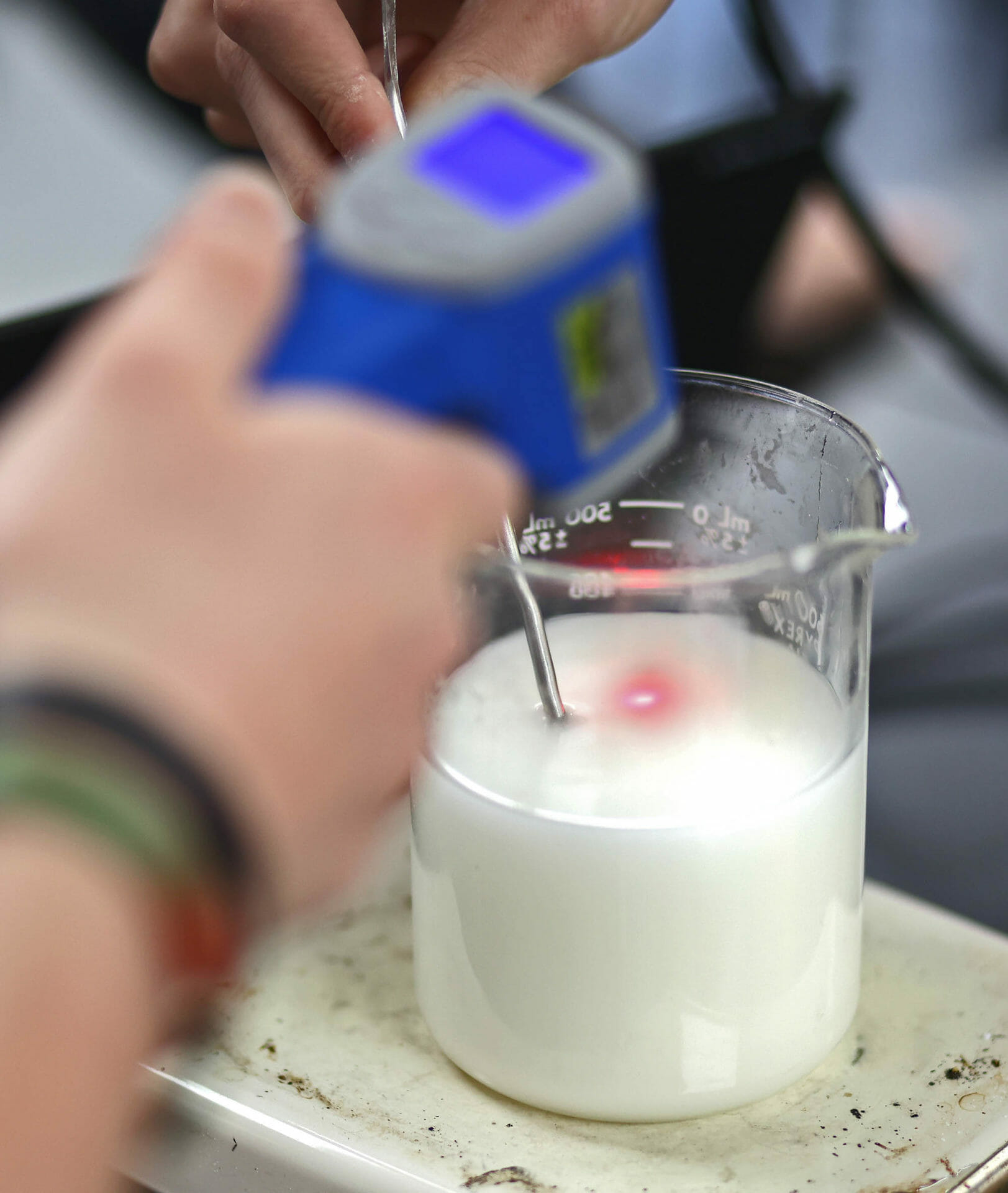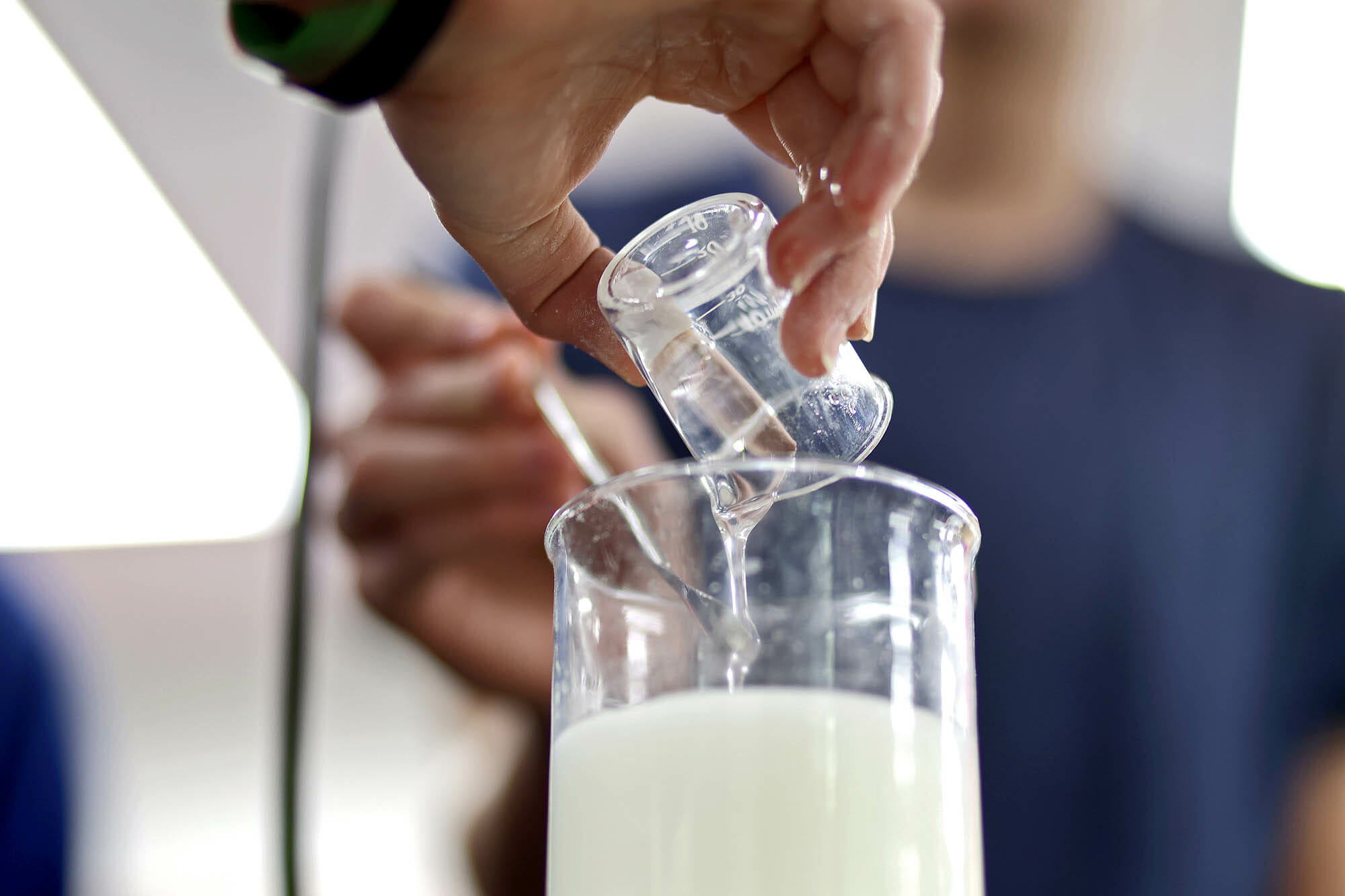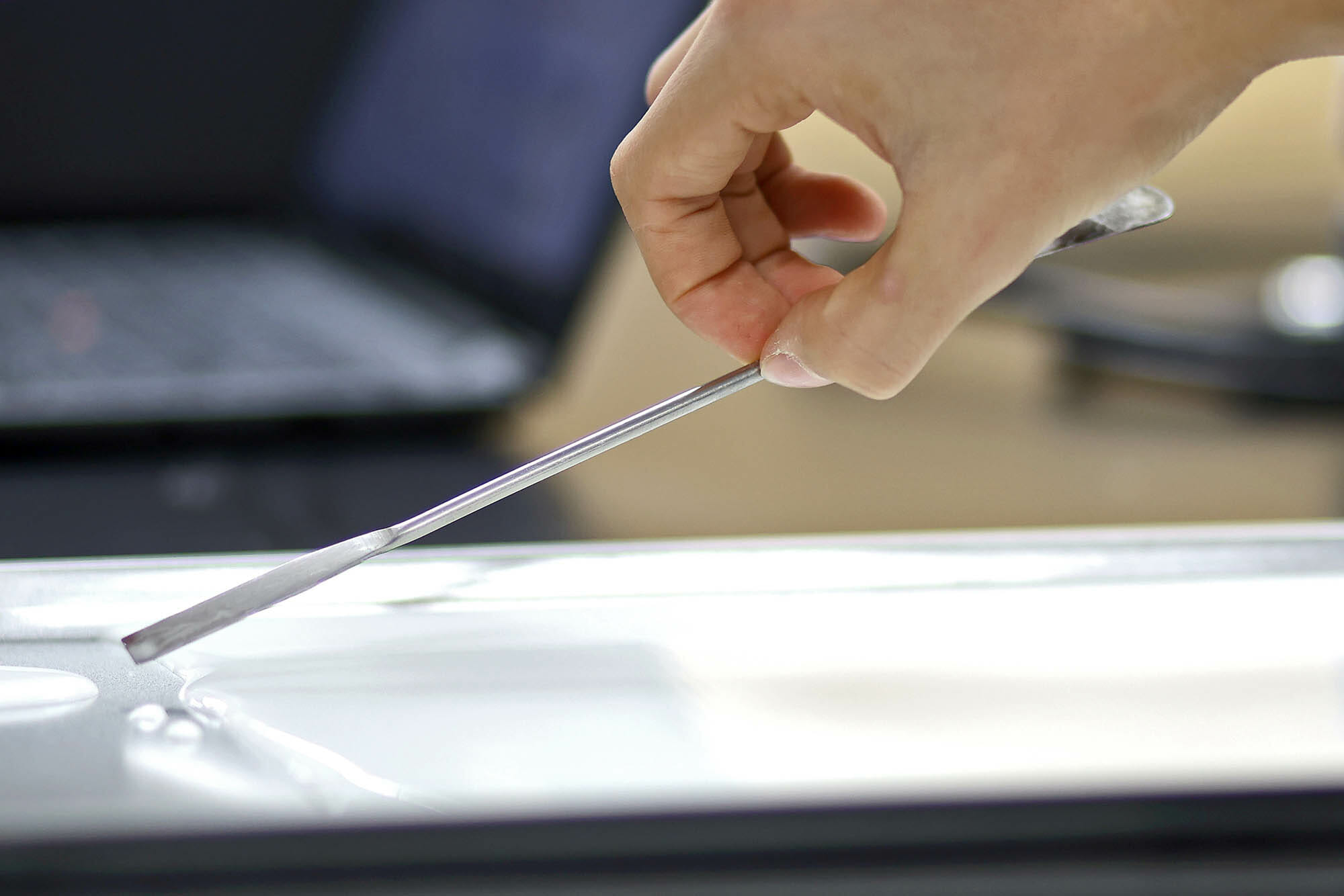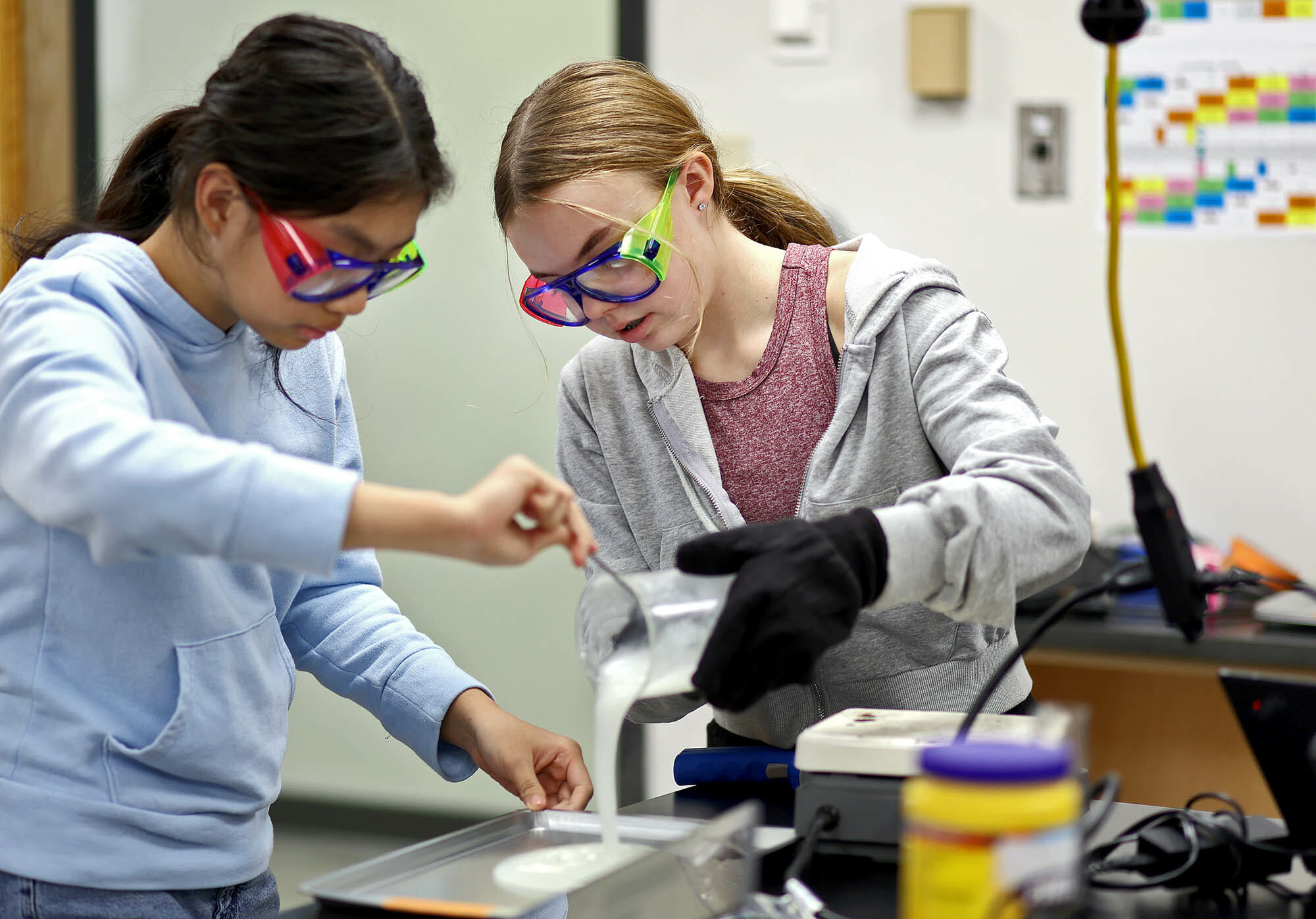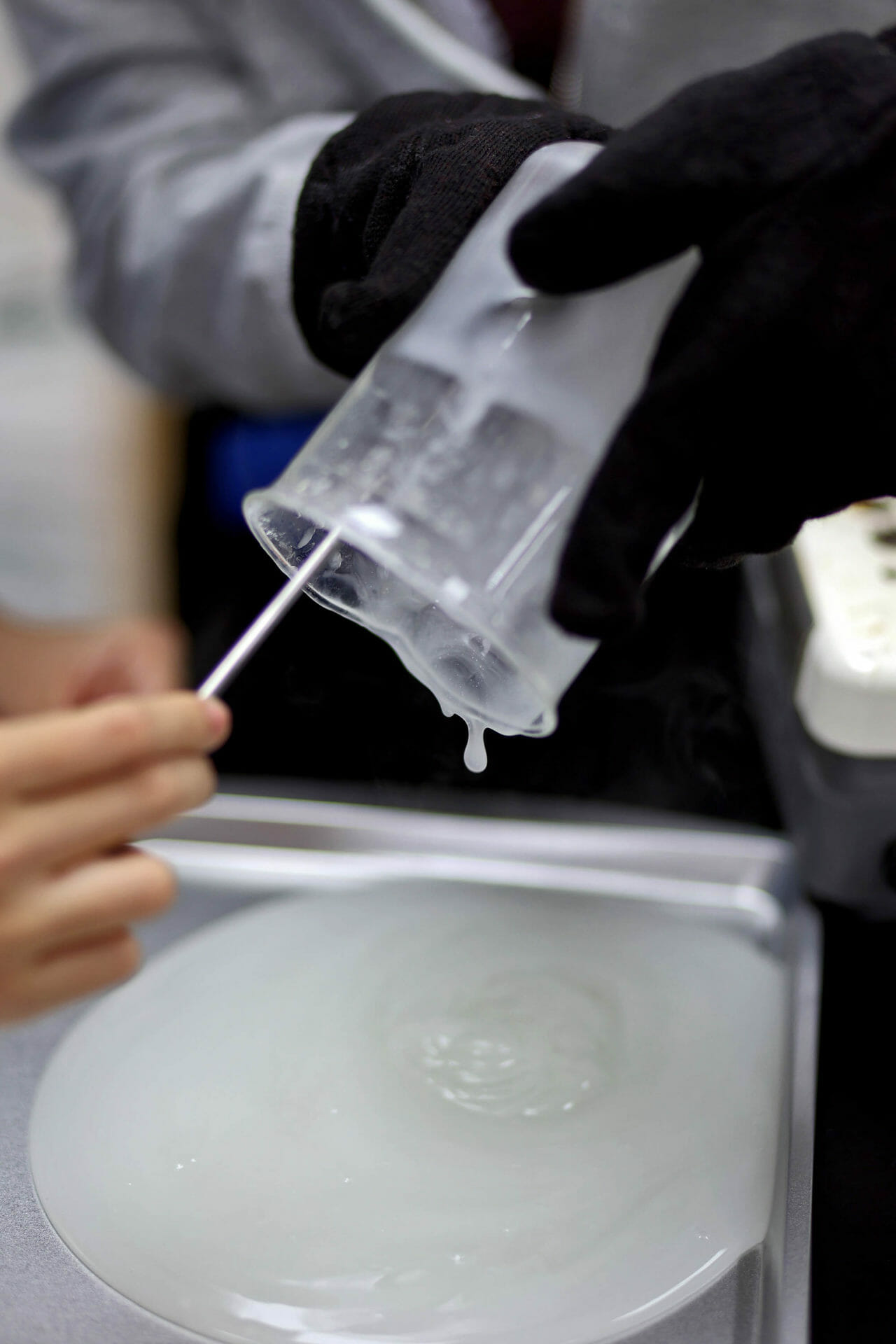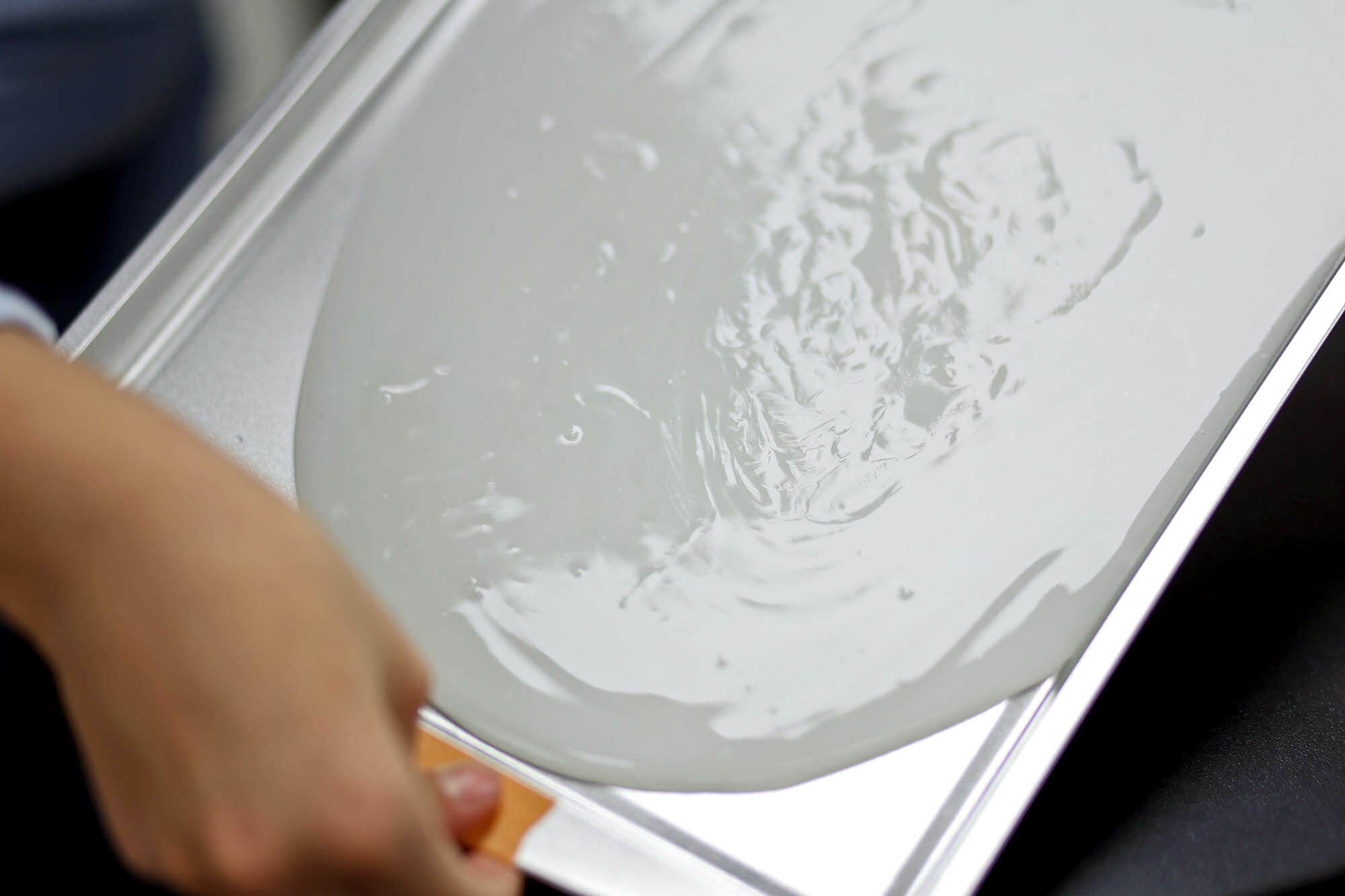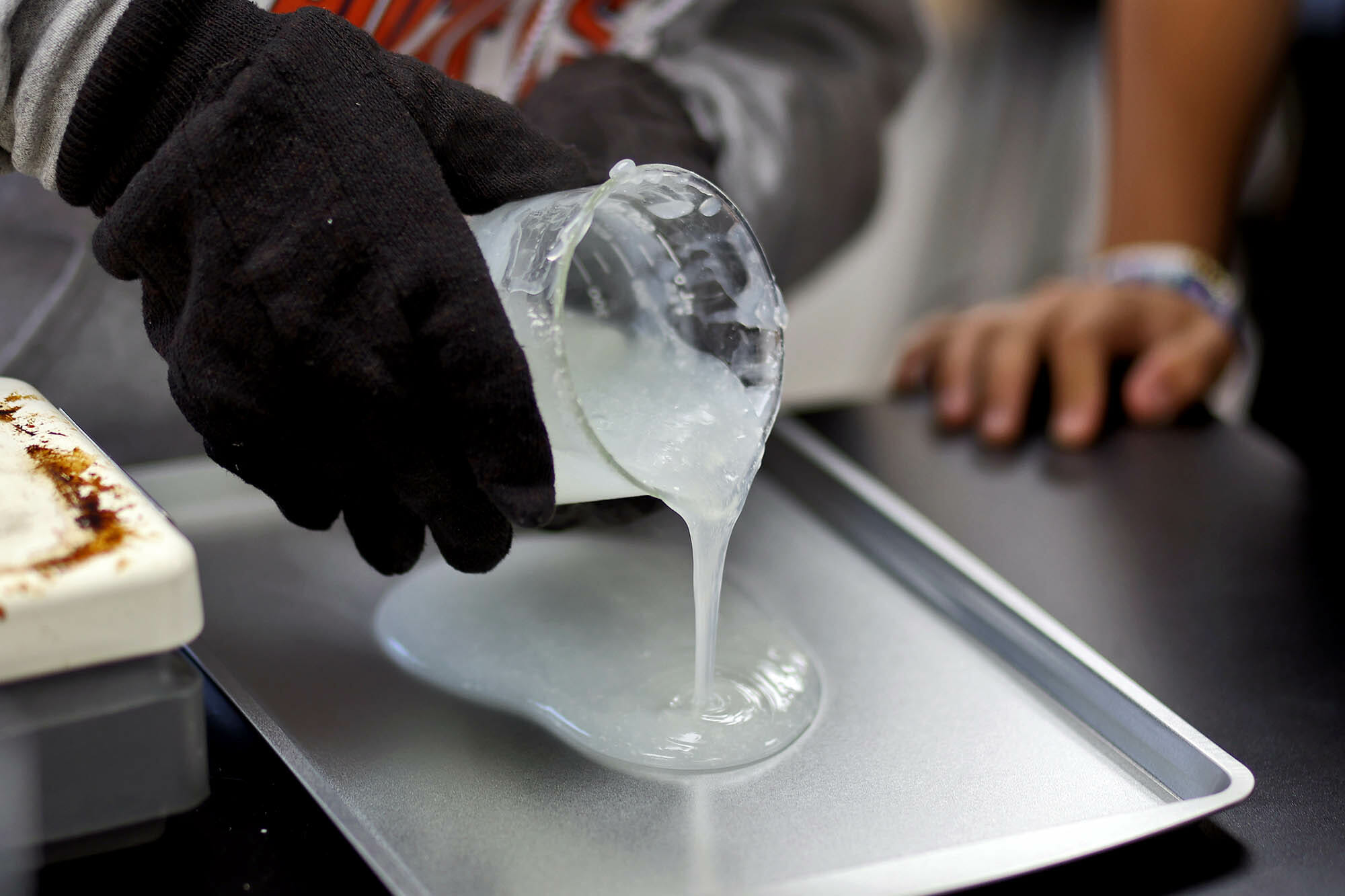The eighth-grade accelerated science recently designed and conducted a lab to make bioplastic (plastic that can easily biodegrade).
While plastics have been a popular and useful material, they have become a big health and environmental problem. „Basically, they were made to be too good at lasting a long time and now take hundreds of years to break down in landfills, resulting in pollution that is hurting wildlife and even finding its way into human food and drinking water,“ said Middle School Science Teacher William Bander.
Becoming Chemical Engineers
The students learned about polymers and, in the process, essentially worked as chemical engineers, trying to solve a problem by making a new material (in this case, bioplastic) that will decompose in a relatively short amount of time. Chemical engineering applies knowledge of math and science, particularly chemistry, to solve challenges related to chemical production, energy, biotechnology, and more. Bander’s students became true scientists by experimenting over and over to make new materials. He encouraged them to see their „failures“ in the trials more like „happy accidents.“ „Sometimes a group of students would cook their bioplastic for too long and produce a very hard textured product,“ he said. While a hard, textured product may not be a good substitute for plastic wrap, it could be used for making plastic toys and figurines. Such happy accidents are common in experimental science. A failed attempt at making a substitute for rubber resulted in the creation of the popular children’s toy, silly putty.
What Are Polymers?
Polymer materials are a common material type designed by chemical engineers. In general, polymers are very large molecules composed of repeating units called monomers. Polymer materials are composed of thousands of strands of polymers that become twisted and tangled when mixed together, similar to a plate of spaghetti. This entanglement imparts a certain amount of strength to polymer materials. Polymers can be made synthetically in a lab, like traditional plastics, or found in nature, like starch from plants that are composed of repeating sugar units. Student scientists learned a lot about polymers through observing the various chemical reactions in their lab experiments.
What Are Bioplastics?
Traditional plastics are a type of polymer material that is typically made from the processing of petroleum oil. These materials are incredibly useful since they are inexpensive and can be designed to exhibit a range of desirable properties. Because they do not degrade, plastics build up in our landfills and can be harmful to the environment. Chemical engineers are working to design plastic materials that are derived from natural polymers, like starch in potatoes and corn or agar in algae. These plastics, referred to as bioplastics, have the ability to degrade naturally but often do not have the same versatile properties as conventional plastics. Our chemical engineers used corn starch, vinegar, water, and glycerin—all natural products—in their attempts to create a new bioplastic.
Creating Recipes for Success
The lab procedure was purposely open-ended, allowing students to develop their own „recipes“ for the bioplastic. They conducted three trials, each time tweaking their recipe to produce a better, more usable bioplastic. „This revision process is essential to the scientific method and is not unlike what real chemical engineers do when trying to make chemical products,“ said Bander. „And these chemical products could be anything from cosmetics to life-saving medicines.“
The students worked to create their own solutions that would produce a safe plastic to cover a container of food/liquid, keeping the food fresh or the liquid from evaporating. They had to analyze and interpret data on the properties of substances before and after the substances interact to determine if a chemical reaction had occurred (versus a physical change), and they had to define the criteria and constraints of a design problem considering the impact on people and the environment. They evaluated competing design solutions and analyzed data from trials to determine the similarities and differences among solutions, all of which helped guide them to the best new solution. They also developed a model for testing their proposed tool/process, allowing for the achievement of optimal success.
„The bioplastic lab was a refreshing challenge as we tackled making functioning plastic wrap from biodegradable sources. It was exciting to figure out the different ratios for the ingredients and solve a real-world problem,“ said Catherine Cai ’27.
„I really enjoyed the bioplastic project that we did, as it gave us the chance to problem solve, collaborate ideas, and work a little independently rather than having teacher-led experiments,“ said Braden Waymire ’27. „We had so much fun trying out different reactions and then reflecting and trying to deduce the things we could improve upon. The assignment had just the right amount of variables necessary to make it challenging but solvable. It also helped us get closer to our group mates as we debated on what to add and had a good time laughing and reflecting upon our errors. Overall, I think that this experiment was a great chance to try a little freedom, prepare us for the upper school, have good discussions with group mates, and of course, have fun!“
The experiments took place over several days, giving the scientists something to look forward to. „I thought the experience was fun because we got to test something out and see if it would work instead of just coming up with a theory,“ said Navya Reddy ’27. „My favorite part was coming into class the next day and getting to see how our experiment had worked out, and being able to come up with a new recipe the next day for our bioplastic experiment.“
Kaan Caliskan ’27 enjoyed the engineering challenge, too. He said, „It was a lot of fun to use substances and items in new ways which we have never imagined before. Never in my mind would I have thought using corn starch, vinegar, water, and glycerin would be able to create new, fascinating forms of plastic and material. My favorite part was being able to reflect on our previous trials and being able to fix our mistakes, and discuss as a group. It was a very good way to not only work together but also increase friendship and communication with my fellow classmates. I learned about how easily substances can change into new unknown materials which we can explore. If I had others learn one thing from my experiment, I would tell them to think and really plan out a plan or a structure before starting an experiment as the thought process behind an experiment is just as important as the experiment occurring itself.“
Well done, eighth-grade chemical engineers!
